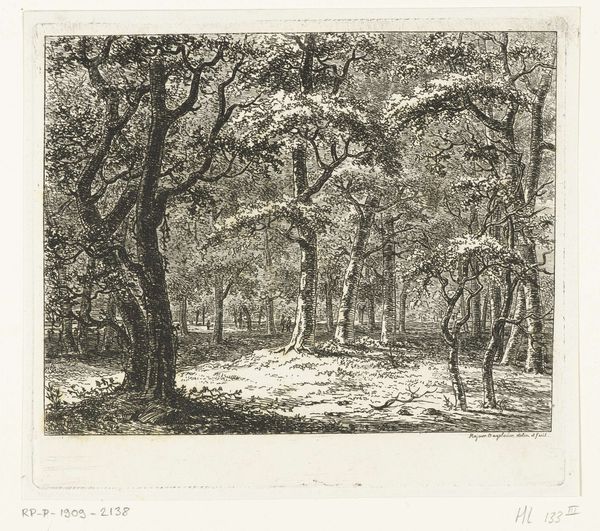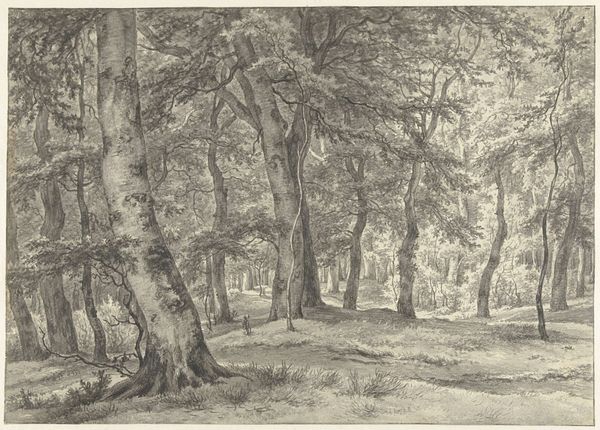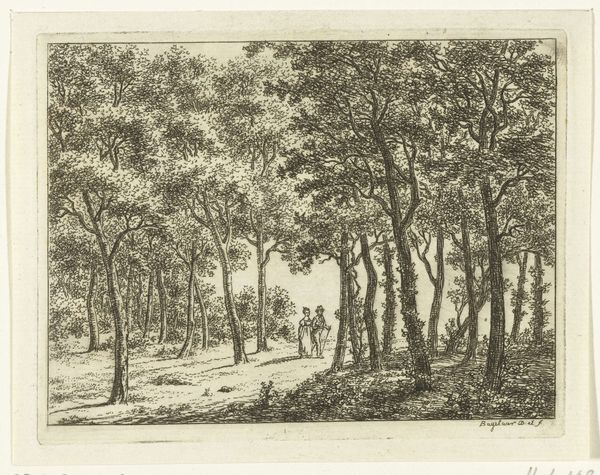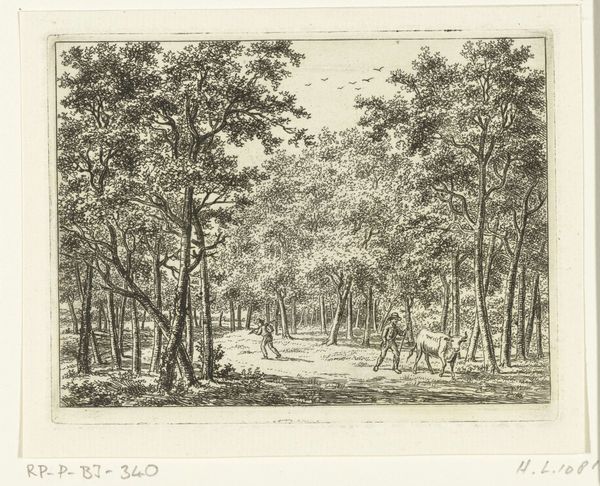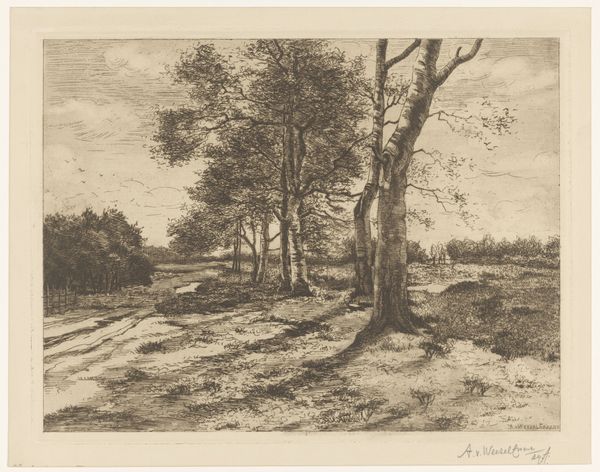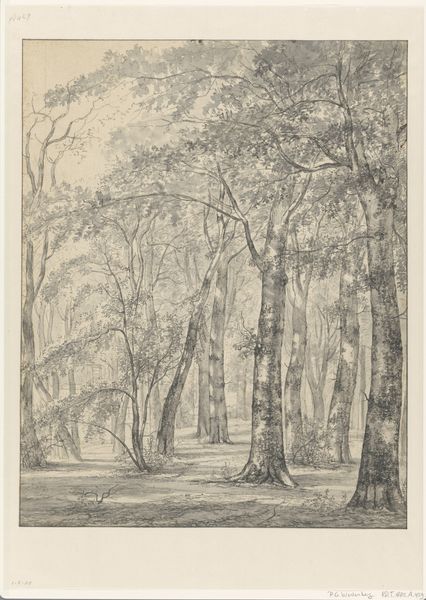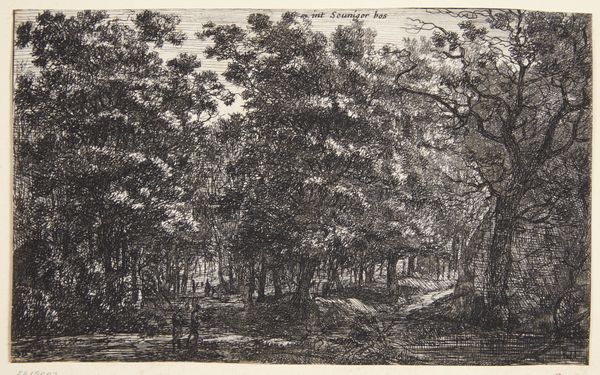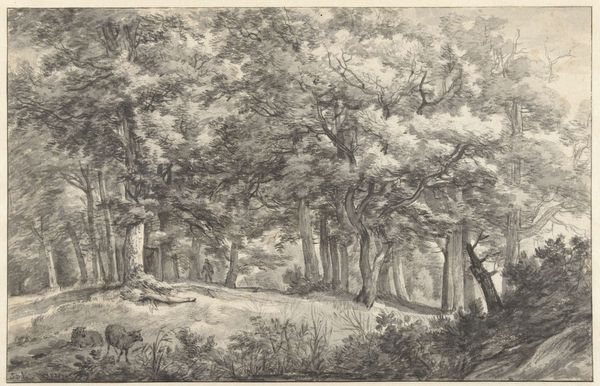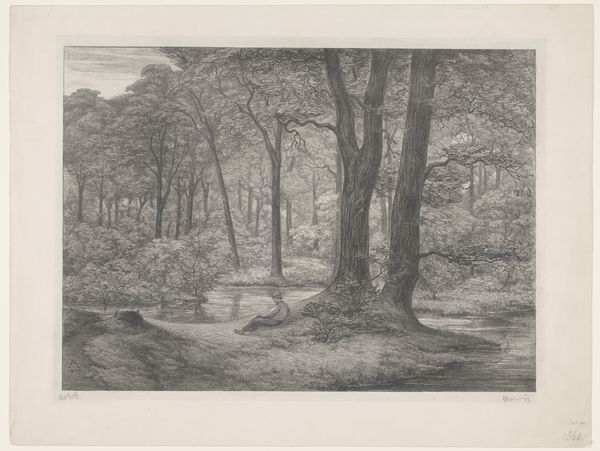
drawing, etching, woodcut
#
drawing
#
etching
#
landscape
#
romanticism
#
woodcut
#
line
#
northern-renaissance
#
realism
Dimensions: height 147 mm, width 168 mm
Copyright: Rijks Museum: Open Domain
Curator: This is "Open plek in het bos", which translates to "Open space in the forest," an etching by Ernst Willem Jan Bagelaar, likely created between 1798 and 1837. Editor: A clearing rendered in near-monochrome; an understated woodland dream. It’s like looking into the eye of a quiet god – detailed and still. Curator: Bagelaar presents a scene that resonates with the Romantic era's reverence for nature. Forests were often seen as places of spiritual refuge, sheltering people both literally and figuratively from worldly troubles. Do you think this aligns with your own feeling of quietude? Editor: Absolutely. It also pulls from Northern Renaissance sensibilities; I see Dürer and Altdorfer subtly interwoven within those delicate lines. It has something to do with that incredibly meticulous cross-hatching. You could say it adds an almost spiritual depth... Curator: A fitting observation. Trees in art often serve as potent symbols of life, growth, and connection, appearing in creation myths worldwide as representative of cosmic life or of ancestors. In this context, one could easily feel like you are standing among ancestors. Editor: Look how Bagelaar builds texture from dense, fine lines. Semiotically speaking, it’s a feast; this artwork makes you question where definition lies: Is it in stark outlines, or the space *between* the marks that the line describes? Curator: Certainly, he's guiding our eyes to that delicate balance between light and shadow, isn't he? Consider the open space itself; it’s a recurring motif across cultures. This glade could also symbolize revelation. That figures emerge on the horizon can feel like a suggestion of journeys and possibility. Editor: Precisely! The composition has this remarkable effect that’s built entirely of negative space. Despite the overt, verdant realism. Bagelaar plays masterfully with this contrast. Curator: This has me thinking about the tradition of depicting figures within landscapes to highlight scale... Bagelaar captures more than the surface beauty; he invites a quiet contemplation. Editor: A forest both tangible and imagined; now, that's quite a compositional achievement! Curator: Yes, the dialogue between precision and suggestiveness shapes a really lovely narrative that, I hope, encourages us all to reflect on our relationship with the natural world.
Comments
No comments
Be the first to comment and join the conversation on the ultimate creative platform.
